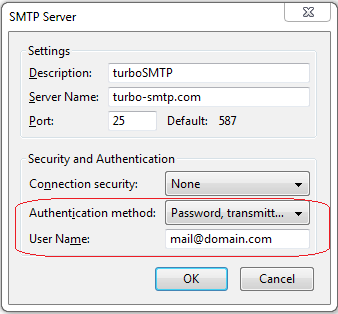SMTP (standing for Simple Mail Transfer Protocol) came originally without any form of authentication process.
That is why in 1999 an SMTP Authentication scheme was developed by J. Myers of Netscape Communications.
What are the advantages of such an authentication process? Basically it adds an extension that secures your mailings: either according to a particular protocol (CRAM-MD5, KERBEROS…), or with a hack called POP before SMTP. (Note that a free server says to keep the password field empty, while a professional SMTP service is automatically protected).
Personal emails can be sent also without authentication, but this lack of safety is dangerous when it comes to mass emailing; and also, the need for a security layer can be requested also with an error message like “Authentication required”.
So how to configure an SMTP authentication? The procedure is simple. You need to open your mail client, go to the SMTP configuration panel, and flag the option “Authentication Required”. Then choose the type you prefer, set your Consumer Key and Consumer Secret (see how to create your API Keys) and switch your server port to 587 (recommended).
